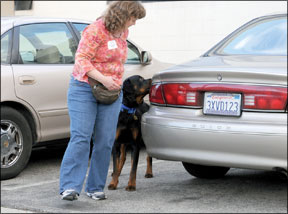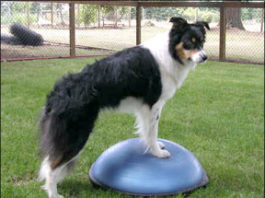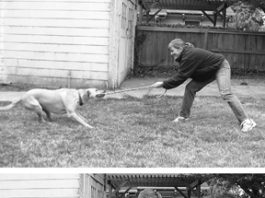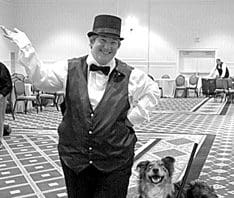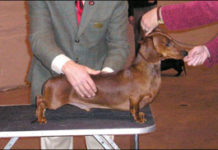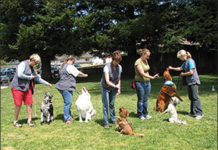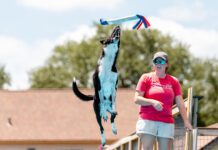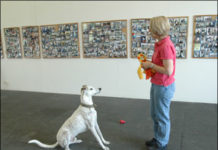Canine Athletic Competition and Sports Psychology
Whether you and your dog are road-seasoned competitors in canine sports, just playing around" in novice dog shows
Stretching Your Dog Reduces the Chance of Muscle Tears
All dogs instinctively know how to stretch and do so with great enjoyment. Dogs stretch without fail upon awakening and whenever the mood strikes during the rest of the day. Who hasn’t watched a dog inch his front paws out in front of him as far as possible leaning into the stretch until it literally ripples along the length of his trunk? When the stretch finally reaches the hips, the hind legs are extended far behind the body in what appears to be total ecstasy. The dog completes the routine by dropping to his elbows and stretching the back in a doggy bow that temporarily elevates the rump. Then, the hindquarters flop to the floor in a grand finale to the stretch.
The Marvelous Mutts
At a performance by The Marvelous Mutts, as the name suggests, you won't see any pedigreed dogs, but you will definitely witness focused owners and competitive dogs! Looking at a photographic gallery of The Marvelous Mutts, one could easily be confused with having found the listing for a rescue promoting their mixed-breed adoption candidates. Instead, it's an inspiring model, both for what rescue dogs can do and what highly motivated dog owners can do for shelter and rescue dogs.
How to Teach Your Dog to “Search”
The "search me!" game uses lots of energy and can tire out your very active dog, and offers very practical applications as well. Start with treats, since most dogs will happily look for food. You can eventually ask him to look for hidden objects (favorite toys, your lost keys) and even hidden or missing humans!
How to Train Show Dogs
a positively trained Boxer
Tug o War Used As a Training Tool
From tiny Pomeranians to huge Mastiffs, dogs love to play Tug o War. There is an inherent canine joy in growling, grabbing, pulling, shaking, ripping and shredding that satisfies a dog's basic predatory instincts. Owners also find it rewarding to roughhouse with their four-footed friends, and a Tug o War game is a great way to take the edge off a high-energy pooch. Many trainers caution against playing Tug o War with canine companions, warning that it teaches a dog to be dominant and aggressive. I encourage my students to play Tug o War with their dogs.
9 Great Warm Up Games and Exercises for Your Dog
Every dog should be walked at least two to three minutes prior to starting activity. For more strenuous activities, walk longer and include some jogging toward the end. There is no better gait for overall exercise than a brisk walk.
5 Ways Teaching Your Dog to Do Tricks Can Improve Training
High-five. Fetch. Jump through a hoop. Spin, twirl, and take a bow. There is no doubt that tricks are fun to train, and even more fun to show off to friends and family. But they are so much more than just a good time! Here are five things tricks can do for you, your dog, and your training.
What Is Dock Diving? How to Get Involved in This Swimming-centric Dog Sport
Do you have a dog who zooms into lakes, creeks, and rivers at first sight? Does your dog live for fetch and toy play? If so, dock diving may be the sport for her.
How To Get Your Dog To Wear A Life Jacket
Vested interests
Tug O’ War is a Fun Game to Play With Your Dog
Contrary to conventional wisdom in some dog training circles, tug is a great game to play with most dogs - as long as you and your canine pal play by the rules. Lots of my clients have dogs with aggressive, reactive, and other stress-related behaviors. One of the best ways to help reduce stress is to increase exercise. Tug is great exercise. I'm constantly encouraging my clients to play tug with their dogs. Inevitably when I suggest it I get a puzzled look and a tentative protest that "some trainer" told them playing tug would make their dog dominant and aggressive. I sure wish I could meet that pervasive "some trainer" some day and convince him/her otherwise. It just isn't so. Tug has a lot going for it besides just being good exercise. Most dogs love to tug. Of course, the caveat is that you play tug properly - with rules, which I'll discuss in a minute. Here are some of the many other reasons this game ranks high on my list of approved activities.


